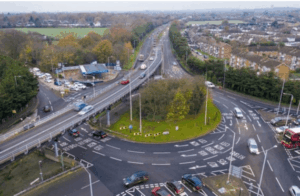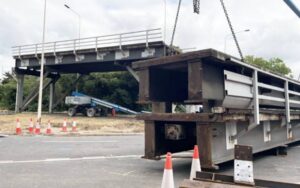Transport for London has strengthened the requirements for its Direct Vision Standard (DVS), which imeasures how much an HGV driver can see directly through their cab windows and sets minimum standards, to promote visibility and safe driving practices.
TfL says it is now strengthening the minimum safety requirements for vehicles in the capital to reduce the level of risk that HGVs can pose to all road users, especially people walking and cycling.
HGVs over 12 tonnes will now require a minimum three-star DVS rating or to fit an updated system of enhanced safety features – the Progressive Safe System (PSS) – to operate in Greater London. Operators will receive a penalty charge notice of up to £550 if they operate an HGV over 12 tonnes in Greater London without a valid HGV safety permit, or do not meet the permit conditions. TfL has introduced these changes to further enhance the safety standards of HGVs operating in the capital, helping them to reduce road danger for everyone.
The PSS has been designed specifically to eliminate the most common causes of fatal collisions between an HGV and those who walk and cycle where vision is a factor, such as when a vehicle moves off from stationary or is turning left.
TfL data suggests that the DVS is already saving the lives of vulnerable road users. In 2023, there was a 62% reduction in the number of fatal collisions involving an HGV, compared to the 2017-19 baseline, as well as reductions in serious injuries. However, TfL says more work is needed to keep Londoners safe. Six people were killed and 32 people were seriously injured in collisions involving HGVs in 2023.
TfL adds that the capital’s DVS is having an impact across the UK and EU, with the work it has undertaken with manufacturers seeing the EU incorporate direct vision into safety standards. The European Commission expects that this, along with other safety measures being introduced, will save an estimated 25,000 lives by 2038.
Walking and Cycling Commissioner, Will Norman, said: “London’s world-leading Direct Vision Standard is helping to significantly improve lorry safety in the capital and is already saving the lives of vulnerable road users. However, every death and serious injury on our roads is one too many, which is why we are working with London Councils and industry to further strengthen the Direct Vision Standard to ensure lorries operating on London’s roads are even safer.
“I’m immensely proud of our Direct Vision Standard, which is a major step forward in the Mayor’s Vision Zero plan to eliminate all deaths and serious injuries from London’s roads by 2041.”
Christina Calderato, TfL’s Director of Strategy, said: “Since we introduced London’s pioneering Direct Vision Standard, we have seen a significant reduction in fatal collisions where vision is a factor in the capital. However, there is much more we need to do, to achieve our goal of eradicating deaths and serious injuries from London’s transport network. It’s vital that all vehicles using London’s roads have safety at the forefront of their design and we’re excited that from today HGVs operating in the capital will become even safer. We’d also like to thank the freight industry for their work helping to ensure that vehicles fit the new safety requirements.”
Andrew Cox, Managing Director, FM Conway, said: “As a key infrastructure services provider across London, our vehicles spend a lot of time on the capital’s streets. The bigger the vehicle, the bigger the challenge is to establish clear visibility for drivers to prevent collisions and accidents.
“TfL’s DVS and its latest Progressive Safe System update, makes sure the largest vehicles operating on the network can do so safely, with driver and technology working in tandem to pre-emptively predict and avoid incidents.
“Health and safety should be a core value for any HGV operator, and TfL with their Vision Zero strategy are making sure that we are making the capital a safer place.”
(Picture – TfL)






















